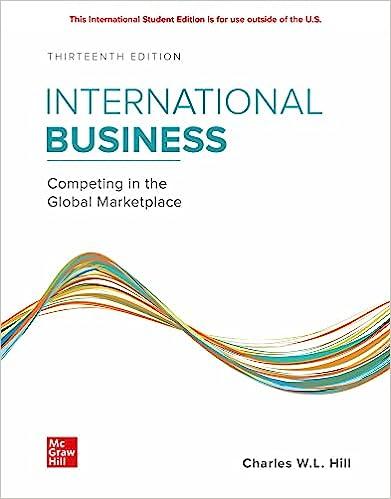Venezuela is in deep trouble. Although the country boasts the largest oil reserves on the planet, a
Question:
The country’s economic decline dates back to the rule of Hugo Chavez, who took power in 1999. Chavez significantly raised the royalty rate that foreign oil companies had to pay the government. Oil companies responded by not investing in Venezuela and looking for oil elsewhere. Chavez then compounded the problem by pushing out the professional management of the state-run oil company and replacing them with his own political appointees. The results included underinvestment in exploration and extraction infrastructure, as well as a falling oil output. By 2017, oil output had plunged by 50 percent from its peak in 1998, a major problem for a country where crude oil makes up about 95 percent of exports.
Early in his rule, Chavez spent oil revenues liberally on social programs, including price controls and fuel subsidies. These initially helped the poor and boosted his popularity. However, by 2012, significant strains were showing in the economy, including declining oil production and exports, rising unemployment, high inflation, and ballooning government deficits.
In 2013, Chavez died and was succeeded by Nicolas Maduro. Maduro continued on the trajectory set by Chavez.
Unfortunately for him, oil prices and output both fell sharply, reducing government revenue. Rather than abandon social programs and subsidies, Maduro simply expanded the government budget deficit, raising it to a staggering 38 percent of GDP by 2017. He financed that deficit by printing money. Predictably, the result has been hyperinflation. The inflation rate surged to 250 percent in 2016, and then to 2700 percent per year in 2017, and close to a million percent in 2018.
This made the country’s currency, the bolivar, worthless, stifling commerce, which depends upon a stable currency.
On the foreign exchange market, the value of the bolivar collapsed, falling from 64 per U.S. dollar in 2014 to 960 per dollar by early 2016, and around 100,000 per USD by early 2018! It should be noted that this was the exchange rate on the black market. The official exchange rate set by the Venezuelan government, which no one pays attention to, stayed at 10 bolivars per USD. With the bolivar now viewed as worthless, no one wants to trade with Venezuela unless they get paid in U.S. dollars. With not enough dollars in Venezuela to finance international transactions, that means a shortage of many goods.

When a country experiences this kind of currency crisis, the normal response is to call in the International Monetary Fund (IMF). In return for a loan of funds, the IMF will often advocate austerity programs to reduce the government budget deficit, along with high interest rates and tight controls over the growth in money supply to reduce inflation.
Other policies advocated by the IMF include the removal of price controls and subsidies and the privatization of stateowned enterprises. However, all of these actions are an anathema to Maduro, who continues to adhere to a hard-line socialist ideology and blame foreign and domestic capitalists for the country’s ills.
Opposition figures in Venezuela have suggested another solution to t he country’s currency problems—- dollarization. The process would involve abandoning the bolivar, and the government introducing cash denominated in U.S. dollars to keep commerce moving. In fact, de facto dollarization is already under way in Venezuela. Increasingly, merchants are ignoring price controls and pricing goods in U.S. dollars at their free market value. Unfortunately, Venezuela’s economic collapse has been so severe that most Venezuelans only earn the equivalent of a few dollars per month, so this doesn’t help them. For dollarization to work, the government would have to purchase about $10 billion worth of U.S. notes and coins and put those in circulation.
There are precedents for dollarization. Ecuador adopted the U.S. dollar in 2000 in order to overcome soaring inflation and a collapse in the value of that country’s currency, the sucre. While the switch was painful—salaries initially fell by 40 percent and savings and pension accounts were ravaged—wages and prices stabilized and the economy recovered and started to grow again. However, Maduro has long vilified the United States, so without a change in government, it is difficult to see a dollarization effort for Venezuela.
Questions
1. What are the root causes of Venezuela’s economic problems?
2. Why won’t Venezuela bring in the IMF to help with its economic problems?
3. How might dollarization help solve Venezuela’s economic problems? What is required for dollarization to be implemented?
4. In addition to dollarization, what else needs to happen for Venezuela to fix its economic problems?
Step by Step Answer:

ISE International Business Competing In The Global Marketplace
ISBN: 9781260575866
13th International Edition
Authors: Charles Hill





